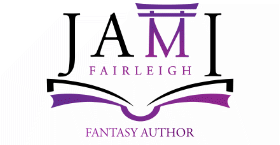
Book Cover Decisions

 This week, I’m wrestling with the many, many, many decisions to grapple with regarding book covers. There’s a lot to uncover, so let’s get started. (Too much?)
This week, I’m wrestling with the many, many, many decisions to grapple with regarding book covers. There’s a lot to uncover, so let’s get started. (Too much?)
Book: “Hey. Hey you.”
Reader: “Me?”
Book: “Yeah. Come over here and check me out.”
Reader: “Nah. I can see what you’re about from here.”
What a Book Cover Is For
The ultimate purpose of a book cover is to attract a reader. It is your bait. Your book description is the hook, and you land the fish when the reader clicks the BUY button, or slaps your beauty down on the checkout counter. (Did I take the metaphor too far?)
“Aspiring authors, get this through your head. Cover art serves one purpose, and one purpose only, to get potential customers interested long enough to pick up the book to read the back cover blurb. In the internet age that means the thumb nail image needs to be interesting enough to click on. That’s what covers are for.”
―
Book Cover Designers
We get one chance to snag a reader at the shop, or slow a reader’s scroll, with our book cover. I’m not a graphic artist nor am I a marketing genius, so I researched cover designers and picked a firm to work with. After considering many designers, I ultimately picked one based on the aesthetic of their portfolio. The book covers they’ve completed “feel” like my book, in terms of design, typography, and composition.
Book Cover Genre Conventions

Genre conventions exist to convey information to readers, and using your genre’s conventions can help readers find your books. Can you reliably pick out which genres are represented in the following covers?
Knowing what your potential readers expect, and delivering a book cover that meets those expectations, can help readers find your book. If you don’t know what readers expect, look at the top selling books on Amazon, Barnes and Noble, Kobo, Apple, and Google, and drill down into your genre.
Using Book Covers for Branding
 Since I’m writing a series, I have to think about how the book covers will relate to each other and the overall series. Series branding includes the typography, the symbol, photograph, or illustration used, the color pallet, and the organization of the elements into the overall design.
Since I’m writing a series, I have to think about how the book covers will relate to each other and the overall series. Series branding includes the typography, the symbol, photograph, or illustration used, the color pallet, and the organization of the elements into the overall design.
The longer the series, the more difficult series branding can become because so much cover art is based on stock photos. While you may find the perfect photo for Book 1, can you find a similar photo to use for Book 6? What about Book 15?
Here’s an example of next-level series branding. Yep, those are six individual books.
Using Book Covers to Convey Tone
Is the tone of your book light? Serious? Humorous? Are there fantastical elements? What kind of reader experience are you selling? Does your cover design convey the emotional experience of your book?
Book Cover Formats
The simplest book cover type is for an ebook. For an ebook, you only need the title, typography, and cover image packaged into a rectangular shape. For ebooks, considerations should include how the cover image looks in color and in black and white (many eReaders are only black and white), how the graphic appears when blown up, and how it looks as a small thumbnail.
Beyond ebooks: Sizing and Formats

If you are planning to release your book in other formats, there are more decisions to be made. For paperbacks, must decide what size you want your book to be. Book covers for printed books include the back cover and spine, so you’ll need to craft the book description for the back cover. If you plan to be the publisher of record, you’ll need ISBNs, an imprint logo, an author photo, and an author bio.
The spine’s width will depend on the length of your book and the size of book you intend to have printed. This can affect the overall book cover design and typography. In many genres, readers appreciate branding across a series’s spine so the books look nice when shelved together.
Like paperbacks, hardcovers require a book description. If your book is jacketed, you’ll need the design of the jacket plus the typography for the cloth covering.
Audio books require a square cover design which usually results in the title and author name moved to create the expected cover shape.
Book Cover Decision Overwhelm
Right now, I’m deep in the weeds on book cover design and the myriad of choices can be overwhelming. I’m planning to use both IngramSpark and Kindle Direct Publishing for my hard copy books, which means I needed to pick a paperback size that each print-on-demand (POD) service offered. One would think that both POD providers would offer the same sizing, but alas, not so. To minimize my cover design costs, I picked a size that each supported, after confirming the interior formatting software I’m using also supports the size.
This video was a much needed reminder to have fun with the book cover design process. Enjoy!
I’d love to hear your experiences! Are you happy with your covers? Have they performed as expected?
Header Photo by Edho Pratama on Unsplash

One thought on “Book Cover Decisions”